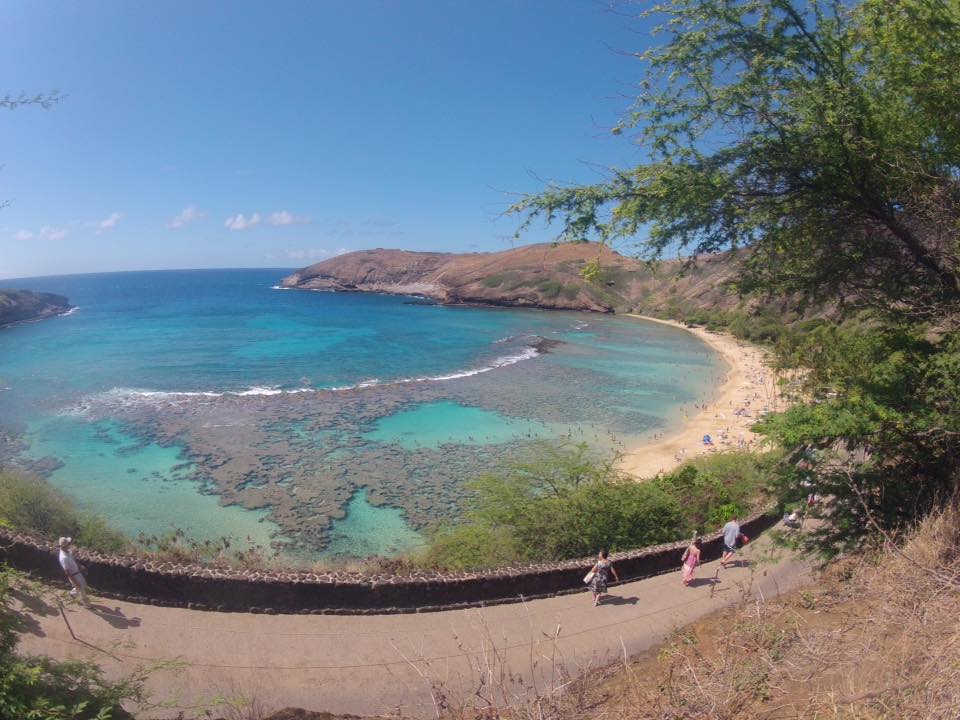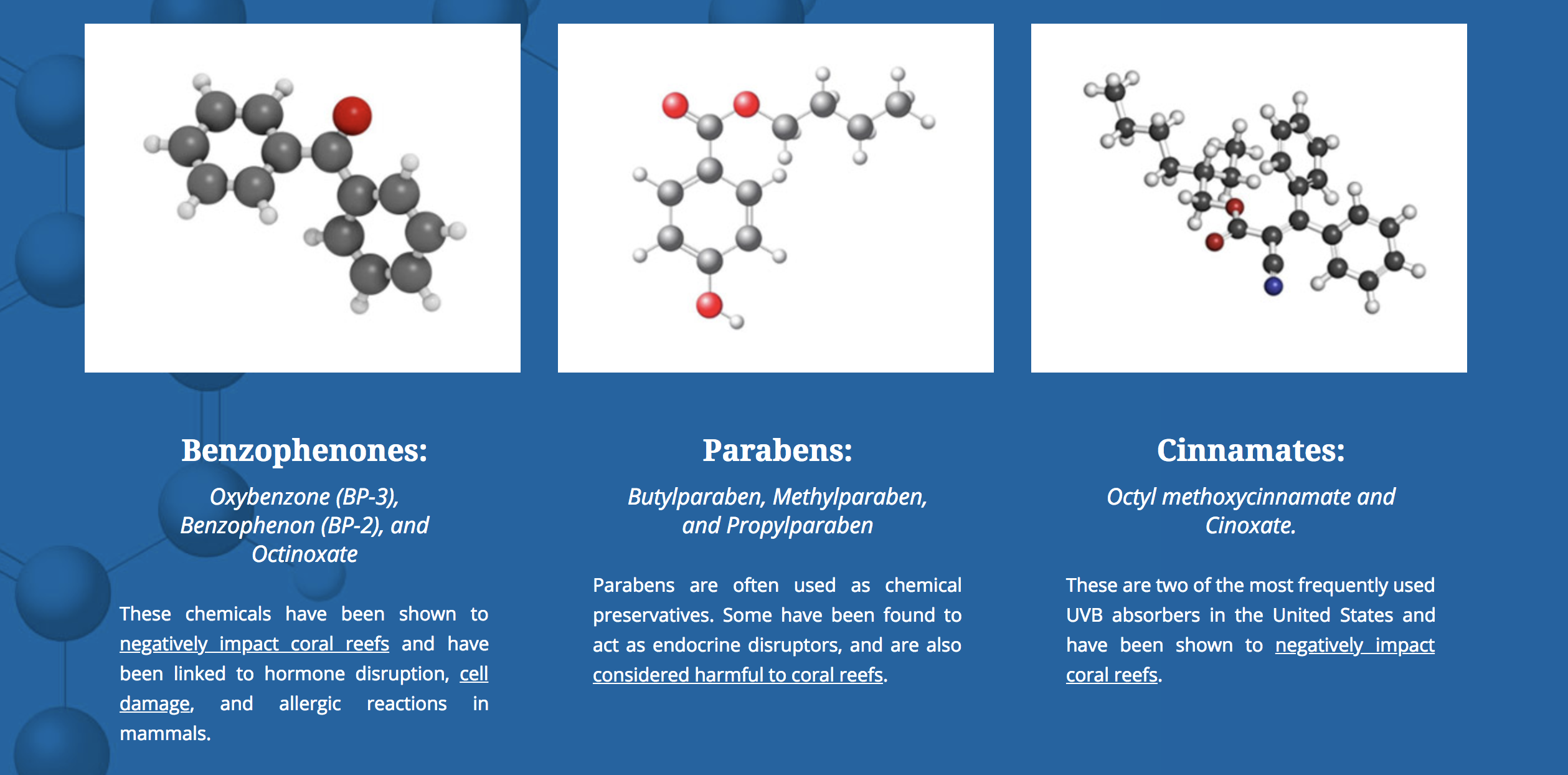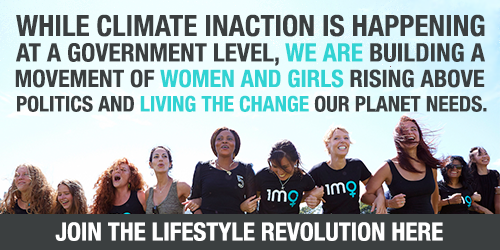Sunscreen has been plastered all over the news lately and not in a positive way.
Recently, Hawaii voted to ban the sale of sunscreen containing certain ingredients proven to harm coral reefs.
It should be taken into account that sunscreen definitely isn't the only reason our reefs are in danger. Climate change is the single biggest threat to our coral reefs worldwide but with all that pressure, we need to make sure we can do everything we can to help reefs stay healthy.

Image: Hanauma Bay in Hawaii is a popular tourist destination for snorkellers
This is an especially important piece of the puzzle for Hawaii because a lot of their tourism centres around reefs and snorkelling. Small enclosed bay areas like Hanauma Bay attract huge volumes of tourists from all over the world. Considering 14 000 tonnes of sunscreen enter the waters of the world's reefs every year, you can see how toxic chemicals of that volume floating around might do some serious damage.
Now we know sun safety is really important, so we are not suggesting you forgo sunscreen and sun protection. But it's important to make sure you're protecting your skin and our wonderful ocean at the same time!
Some Background On Sunscreen
As you may well know, sunscreen blocks harmful UV rays that beam down on us from the sun. But it's a bit more complex than that.
There are two types of UV rays: UVA, which penetrate deep into the skin causing ageing, skin damage and skin cancer and are common all year round; and UVB, which are stronger in the summer months between 10am and 4pm and cause surface skin damage like reddening, sunburn and skin cancer.
The active ingredients in sunscreen are the ingredients that stop UV rays from penetrating your skin. Some active ingredients only stop UVA rays, some only stop UVB rays and some stop both. Inactive ingredients in sunscreen act as preservatives or vessels for the active ingredients.
Types of sunscreen
There are two main types of sunscreens.
1. Chemical sunscreens
These use chemical compounds as the active ingredient which absorb UVA and UVB rays before they reach your skin. Typically these sunscreens will rub into your skin so that they are clear. Some common chemical active ingredients are octinoxate (also known as octyl methoxycinnamate) and oxybenzone (also known as benzophenone-3).
2. Mineral or 'barrier' sunscreens
These use physical barriers in the form of finely ground up minerals as the active ingredient to reflect UVA and UVB rays back off your skin. These sunscreens tend to be thicker and can often leave a white residue on the skin. The most common mineral active ingredients are zinc oxide and titanium dioxide.
Which are unsafe and why?
The two ingredients banned from sale in Hawaii are oxybenzone and octinoxate. The ban came after a study found that these chemicals seeped into young coral and contributed to coral bleaching.
Although these are the only two banned, many other active and inactive ingredients in chemical sunscreens have been shown to be unsafe for coral reefs.
The below image from the Reef Safe website outlines the harmful chemical ingredients that should be avoided and why:
Some studies have also raised concerns that mineral (zinc and titanium based) sunscreens containing nanoparticles (particles so small they have to be measured in nanometers - 1 000 000 x smaller than a millimetre!) have the capability to damage reefs because they are so small they can damage the reproduction capabilities of some fish and produce hydrogen peroxide which can be harmful to phytoplankton. Mineral sunscreens however, haven't been found to directly harm coral.

Image: Clear water and healthy reefs in Timor Leste
How To Choose
In a nutshell, no sunscreen is completely safe. However, many ingredients commonly found in chemical sunscreens cause significant harm to coral reefs so we would suggest avoiding those all together.
That leaves us with mineral sunscreens made from zinc oxide and titanium dioxide.
Try to find mineral sunscreens that don't have nano particles in them. This can be a bit tricky depending on where you are as some countries like the EU and Australia have strict regulations in process and others do not. It's often up to the company to test their own product and label themselves as 'non-nano' and different brands have varying levels of transparency around what exactly goes into their sunscreens so we'd recommend doing some further reading on individual brands online. From our own browsing we like Badger Balm, Goddess Garden Organics and Surf Mud.
Many sunscreens label themselves as 'reef safe' or 'biodegradable' which is a good thing to look out for but neither of these terms are officially regulated, so always double check the ingredients and look for more information and clarification of those labels on the website. If it seems vague and glosses over the processes or ingredients, or uses complicated language that's not easily understood, then it's probably best to steer clear.
You can lessen your sunscreen use overall by covering up in a shirt, rash vest, wetsuit or hat then applying sunscreen to exposed bits of skin like hands, neck and face. Then make sure you wait 15 minutes before entering the water to let the cream absorb. This is better for sun protection and also means less will wash off into the water!
Make sure your sunscreen is labelled as 'water resistant' because it will be more likely to stick to your skin and not wash off in the water, and choose creams over sprays because it will go directly onto your body and won't land on the sand where it can be washed into the ocean with the tide.
And last of all, enjoy the experience or snorkelling, surfing or diving on a reef and be sure to tell your friends and family how they can protect it too!



